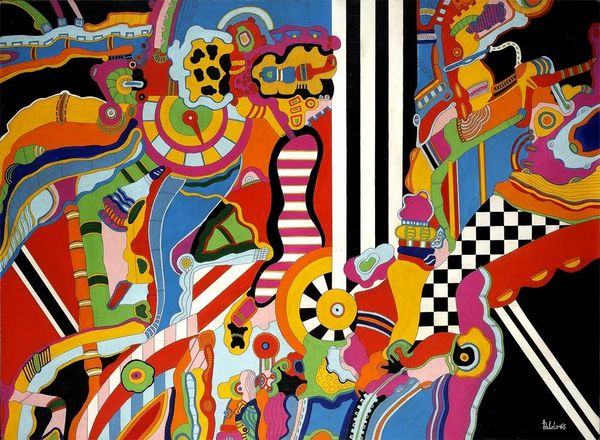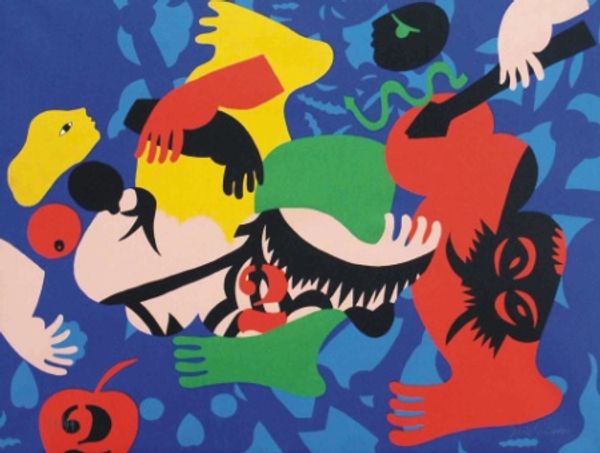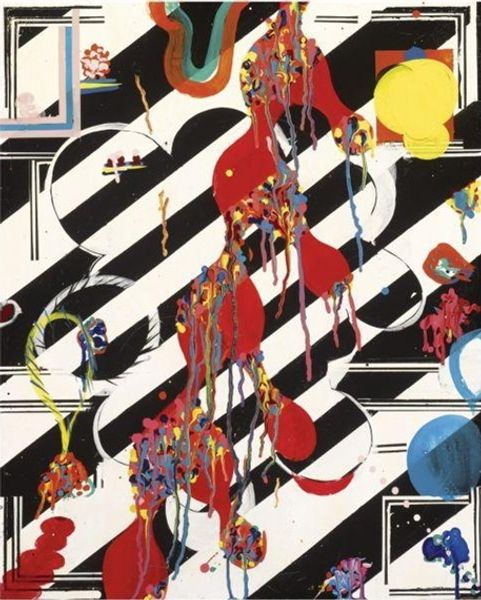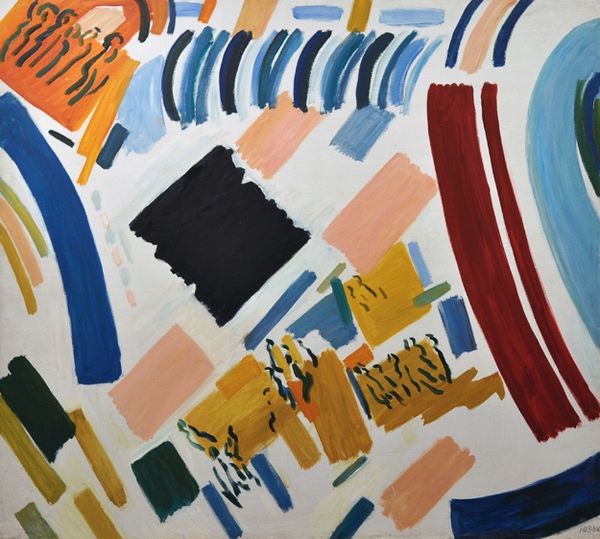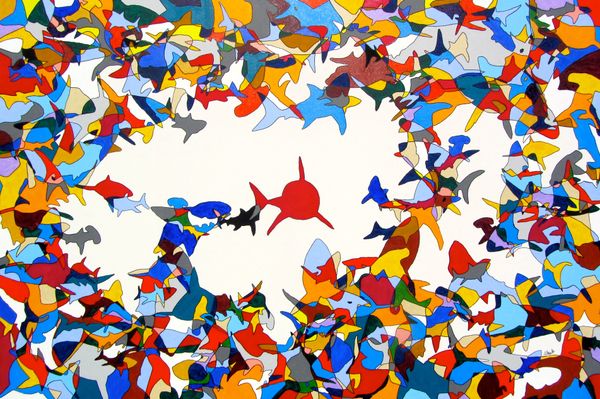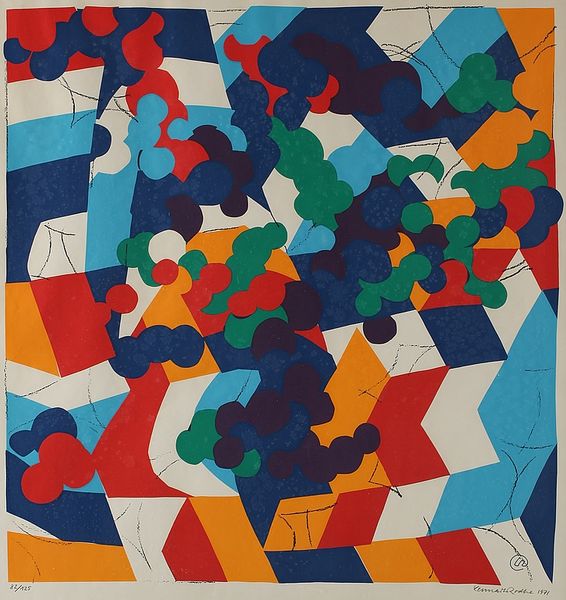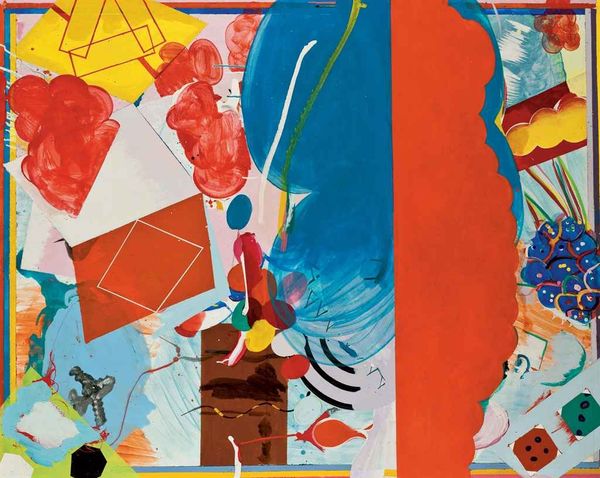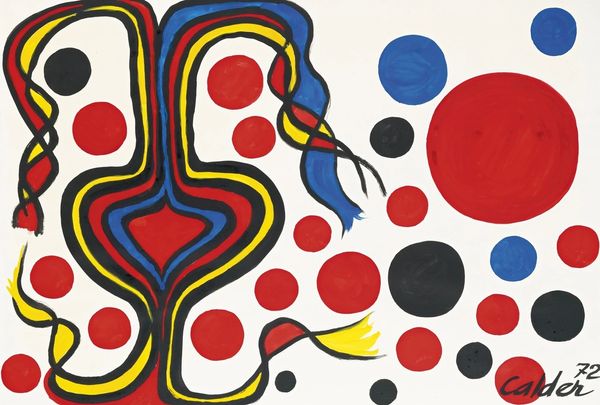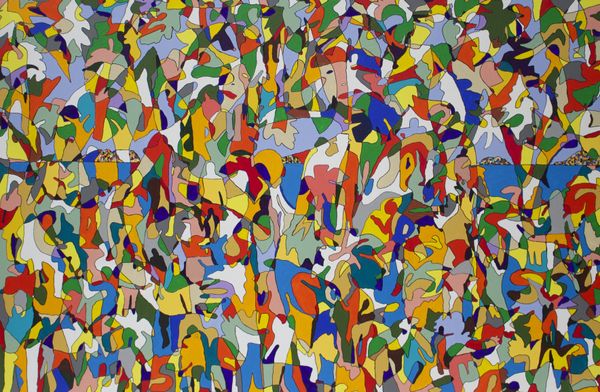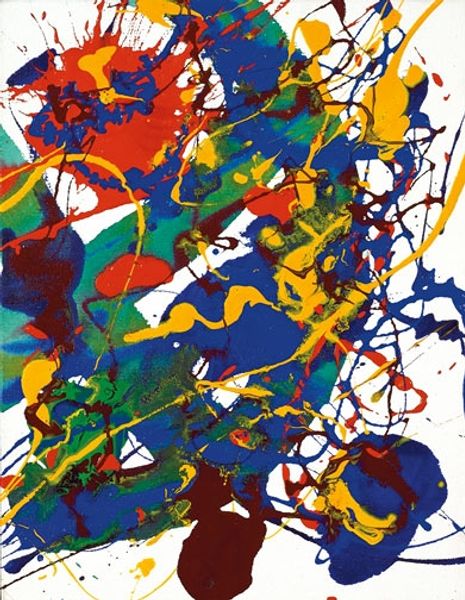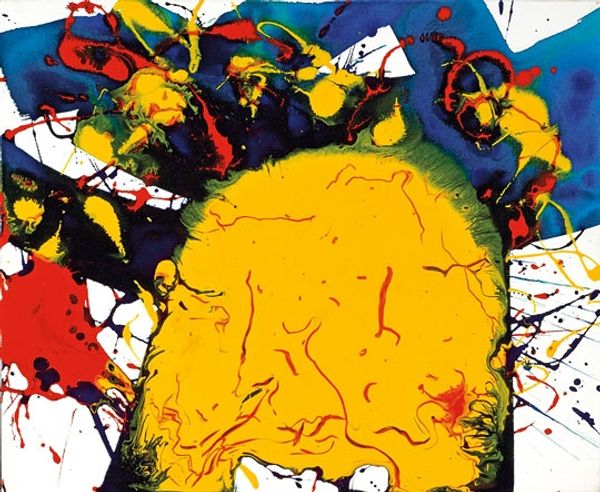
acrylic-paint
#
abstract expressionism
#
popart
#
pop art
#
acrylic-paint
#
geometric pattern
#
geometric
#
abstraction
#
pop-art
#
modernism
Copyright: Antonio Palolo,Fair Use
Editor: Here we have Antonio Palolo's "Untitled," created in 1966 with acrylic paint. I'm immediately struck by the riot of color and how it feels both chaotic and carefully planned. What do you make of this work? Curator: I see a compelling engagement with the materials and processes inherent to painting itself. Palolo is playing with the very stuff of art – acrylic paint – applying it in a way that celebrates its inherent properties. He flattens the picture plane, eschewing traditional representation in favor of exploring color relationships and the sheer physicality of paint. Editor: So, you're saying it's less about what it represents and more about how it was made and what it's made of? Curator: Exactly. Think about the mid-20th century: artists were increasingly interested in deconstructing traditional hierarchies that separated "high art" from craft. Palolo, with his bold, almost graphic use of color and simple shapes, seems to be aligning himself with this ethos. It's pop, it's abstract, it's even reminiscent of textile design, but it resists being easily categorized. What materials, besides the acrylic itself, do you see possibly inspiring his particular approach? Editor: The color palette makes me think of commercial design or printed matter, like advertising or packaging. Also, the hard edges and flat planes, they are also reminiscent of mass production! Curator: Precisely! The social context of mass production and consumerism is crucial here. This piece feels like a visual response to, and perhaps a critique of, the increasingly manufactured world. Editor: That’s fascinating, I didn’t consider it that way initially, but that makes perfect sense. It definitely makes me appreciate the materiality and processes behind this so much more. Curator: Agreed! It reveals how even seemingly abstract forms can be deeply rooted in the social and material realities of their time.
Comments
No comments
Be the first to comment and join the conversation on the ultimate creative platform.
